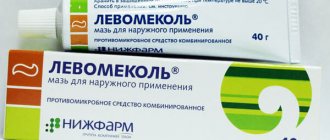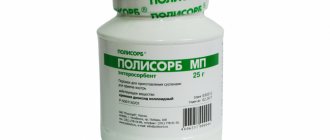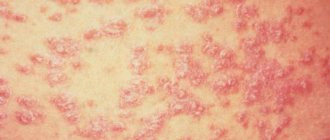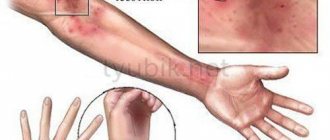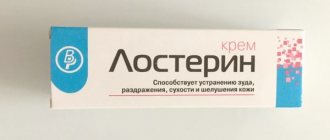A Guide to Home Phototherapy for Psoriasis
Phototherapy or light therapy may help reduce the symptoms of psoriasis.
Home phototherapy can be safe and effective for people with psoriasis if they follow their doctor's instructions for its use. Psoriasis is an autoimmune disease in which the immune system becomes oversensitive and attacks healthy skin cells. The attacking cells multiply faster than normal and form a rash of thick, inflamed plaques on the skin. These plaques usually have a flaky crust on top.
Phototherapy can be done on an outpatient basis in a clinic, or your doctor may prescribe a phototherapy unit for you to use at home. Research shows that home phototherapy can provide the same results as hospital treatment.
This article explains how phototherapy works, the different types of home phototherapy, and possible side effects.
Harm of radiation and contraindications to light therapy
Light therapy may be contraindicated. Methods based on ultraviolet irradiation cannot be used if a person has the following conditions:
- Disorders of the functioning of the thyroid gland - thyrotoxicosis.
- Active phase of tuberculosis.
- The period of gestation and general exhaustion of the body.
- Excessive individual sensitivity of the body to light.
- Heart failure and arterial hypertension of 2 and 3 degrees.
- The use of a certain number of drugs - antibiotic, photosensitizing or dermatotoxic agents.
- Renal dysfunction – kidney failure.
It is necessary to refuse treatment of psoriasis using infrared radiation in the following situations:
- period of exacerbation of chronic diseases;
- tuberculosis in the active phase;
- blood diseases;
- individual intolerance;
- tumor formations;
- the presence of purulent processes without outflow;
- pregnancy and lactation;
- high risks of bleeding;
- menses.
Phototherapy is generally harmless, however, when it comes into contact with the skin, light rays can provoke redness - erythema. Under the influence of infrared rays, such a reaction (thermal) appears after a few minutes. When exposed to UV rays, redness (photoelectric) occurs after 2-8 hours. The intensity of the skin reaction depends on individual sensitivity. Subsequent irradiations reduce the degree of skin reaction to the effects of light fluxes and the severity of erythema decreases.
In some conditions, skin reactivity is altered:
- increases in the case of certain types of eczema;
- increases in a number of neurovascular pathologies;
- decreases in chronic infectious processes;
- with hyperfunction of the thyroid gland increases;
- rises when using sulfonamide medications;
- increases or decreases with lesions of parts of the central nervous system.
After 3-4 days, a tan appears in the irradiation zone, which can appear without preliminary erythema - in the case of repeated long-wave UV irradiation. The intensity of pigmentation (tanning) depends on the course of psoriasis.
What is phototherapy?
Phototherapy uses ultraviolet light to reduce swelling and slow the overproduction of skin cells caused by psoriasis. Ultraviolet light is invisible to the naked eye and penetrates the skin.
There are two types of UV radiation:
UV-A
This type of light can penetrate deeper into the skin than UVB. A person receiving UVA light treatment must sensitize their skin with a plant-based chemical called psoralen in order for the treatment to be effective.
UV-B
UVB light penetrates the outer layers of the skin and can cause sunburn. Phototherapy using UV-B light is effective on its own, without any chemicals.
UV lamps for light therapy
We offer to buy UV devices for the treatment of skin diseases. These are certified devices that help in the complex treatment of psoriasis. There are two options - with and without a timer. Both devices are convenient and safe. Each is accompanied by detailed instructions for use. They are suitable for treating the skin and also have combs for the scalp. Safety glasses included. These devices are compact, light weight, and easy to use.
Dermalife UV devices are based on reliable Philips lamps with a wavelength of 311 nm for narrow-band exposure. They are effective in treating the manifestations of psoriasis on the skin and nails.
Side effects
Phototherapy for psoriasis often causes sunburn reactions. In rare cases, this can also lead to blistering.
One 2022 study found that people who used home phototherapy experienced severe erythema, a skin reaction that causes a rash, more often than people treated in a hospital. However, blisters were more common among those treated in hospital.
Exposure to ultraviolet radiation can also increase the risk of skin cancer, so when using phototherapy it is important to follow your doctor's instructions and have your skin examined regularly.
The effectiveness of ultraviolet treatment
UV radiation is a therapeutic factor used as part of the complex therapy of psoriatic lesions.
By combining external agents with procedures and other components of complex treatment, it is possible to achieve greater positive dynamics due to the following therapeutic effects:
- resorption of psoriatic lesions;
- reducing the toxic effects of certain medications;
- reducing the duration of use of pharmacological drugs.
Often, in combination with phototherapy, 3-4 medications are used for internal and external use.
The advantages of ultraviolet radiation are the following effects:
- active stimulation of recovery processes;
- increase in nonspecific resistance and local immunity;
- actual absence of side effects;
- minimal risk of developing allergic reactions.
When combining UV radiation in combination with other therapeutic measures for psoriasis, the following results are achieved:
- decreased inflammatory activity;
- softening and gradual disappearance of plaques;
- increasing microcirculation and trophism of the skin.
Light therapy is one of the important components of the treatment of forms of psoriasis that are poorly responsive to classical therapeutic measures.
Does phototherapy work?
Phototherapy does not cure psoriasis, but it can reduce symptoms.
According to some data, in special cases, phototherapy can completely clear the skin. In other cases, it may simply reduce the appearance of psoriasis plaques. Doctors recommend phototherapy only if other treatments, such as topical steroid creams, have failed to improve symptoms.
A 2022 study compared the results of phototherapy treatment at home with the results of treatment in hospitals. The researchers used the Psoriasis Area and Severity Index (PASI), which measures the intensity and extent of an outbreak, as a baseline. Their results showed that 40.7% of those treated at home scored a PASI score of 75 after 46 treatments, compared with 41.7% of people treated in a hospital. A PASI score of 75 corresponds to a 75% reduction in symptoms.
The study also found that people were generally more satisfied with treatment when receiving it at home.
Phototherapy on dark skin
Research into the effectiveness of phototherapy for different skin tones has been limited, but research is currently ongoing. According to the National Psoriasis Foundation, phototherapy can be very effective in reducing psoriasis symptoms in people with dark skin, who often have thicker skin lesions.
However, such patients may find that phototherapy may leave spots on their skin. This is because treatment can further accentuate the hyper- or hypopigmentation that psoriasis can cause.
Reviews from patients and doctors
Patients respond positively to the use of light therapy as part of the treatment of psoriasis. People note an increase in the duration of the remission period, as well as fewer skin psoriatic manifestations.
Doctors often prescribe phototherapy as an addition to a comprehensive course of treatment for psoriasis. However, experts point out that phototherapy cannot be the main method of getting rid of the disease - ultraviolet and infrared irradiation are not capable of having a deep effect and generally make it possible to obtain a greater aesthetic result from complex therapy.
How long does this procedure take?
Phototherapy is usually three sessions per week for 4 weeks to 3 months. Research shows that phototherapy more than three times a week provides little benefit, although it does expose the patient to an increased risk of side effects such as rash.
Some people can only do two classes a week. According to a study published in the Journal of the American Academy of Dermatology, patients who received two phototherapy sessions per week saw their psoriasis symptoms resolve in an average of 88 days, compared with 58 days for those who received three sessions per week.
After the initial treatment period, your doctor may recommend ongoing weekly treatments to keep your skin clear.
At-home phototherapy machines reduce the need to visit a clinic or specialist's office, but doctors still recommend frequent psoriasis screenings.
The effect of infrared and ultraviolet radiation on the skin of psoriasis patients
Light therapy using ultraviolet and infrared radiation can reduce the intensity of psoriatic manifestations and transfer the patient into a state of stable remission - but only if these procedures are carried out not separately, but as part of complex treatment.
Ultraviolet has been used for a long time and its natural source is the sun. To improve the condition of the skin, patients with psoriasis were recommended to vacation in southern countries at least once a year.
But, since solar activity is not constant and its highest levels last for only a few months, the phototherapy technique is used. This procedure involves the elimination of affected cells using artificial UV rays that have a precise length.
A phototherapy regimen developed by the attending physician in case of psoriatic lesions of the body helps to increase the synthesis of cytokines - certain molecules that are responsible for the “survival” of cells. With infrared irradiation, tissues are heated under the influence of UV rays, which increases the rate of metabolic processes in the body. In addition to cytokines, during the process of IR exposure on tissue, there is an increase in the production of vitamin D and melanin.
Therapy of psoriasis using UV radiation and infrared rays must be carried out taking into account all safety rules in compliance with existing standards for the effects of ultraviolet and infrared waves on the dermal integument. On the face, the skin most often responds to external influences with an allergic reaction, so before starting any manipulations you need to make sure there are no side effects.
There are three spectra of wavelengths - A, B, C. Spectrum A and B are considered to be the most effective.
How to do phototherapy at home?
Your doctor will explain how to use the phototherapy machine at home. Be sure to follow their instructions as UV rays can damage the skin, causing premature aging, sunburn and skin cancer.
Some doctors begin phototherapy in a hospital setting before recommending that the patient continue treatment at home. Your doctor will explain the importance of protecting sensitive areas of the body, such as the eyes and genitals, and explain when to use moisturizers. He will also explain how to position the device so that it targets the appropriate area and how far away from the device the patient should stand.
The doctor will evaluate the medical history and note any medications the patient is taking, including supplements and herbs. Depending on your skin type, doctors will recommend a starting dose for the first few treatments and gradually increase it.
You should maintain at least a 24-hour interval between sessions and reduce the exposure time if you regularly skip treatment.
How does ultraviolet light affect psoriasis symptoms?
Pathology that is difficult to treat with various groups of drugs is classified by doctors as diseases of an autoimmune nature that have not been fully studied. Traces of the insidious disease, which appear on the surface of the skin as plaques of pink scales, cause physical suffering and psychological discomfort to patients.
The assistance of physiotherapeutic procedures, which include ultraviolet treatment of affected areas, effectively complements the main treatment program for psoriasis, alleviating the patient’s condition.
During a psoriasis light therapy session, the unhindered penetration of ultraviolet rays through the skin stops the proliferation of cells affected by inflammation. What happens under the influence of the irradiator:
- As a result of the immunomodulatory effect of light therapy, the activity of specific antibodies decreases;
- The process of regeneration of damaged tissues is restored after normalization of the natural ability of cells to divide;
- The cellular metabolism of the epidermis improves, which promotes the absorption of vitamin D and ensures long-term remission.
Exposure to ultraviolet lamps combines well with other methods of treating psoriasis. The use of the irradiator does not harm the patient’s health, is not associated with inconvenience, and does not threaten side effects or decreased immunity. Among the advantages of ultraviolet technology is its harmlessness for people of all age categories.
Health care workers do not advise using ultraviolet irradiators on their own. Excess ultraviolet radiation can negatively affect the condition of the dermis, causing its premature aging with an increased risk of the disease degenerating into cancer.

